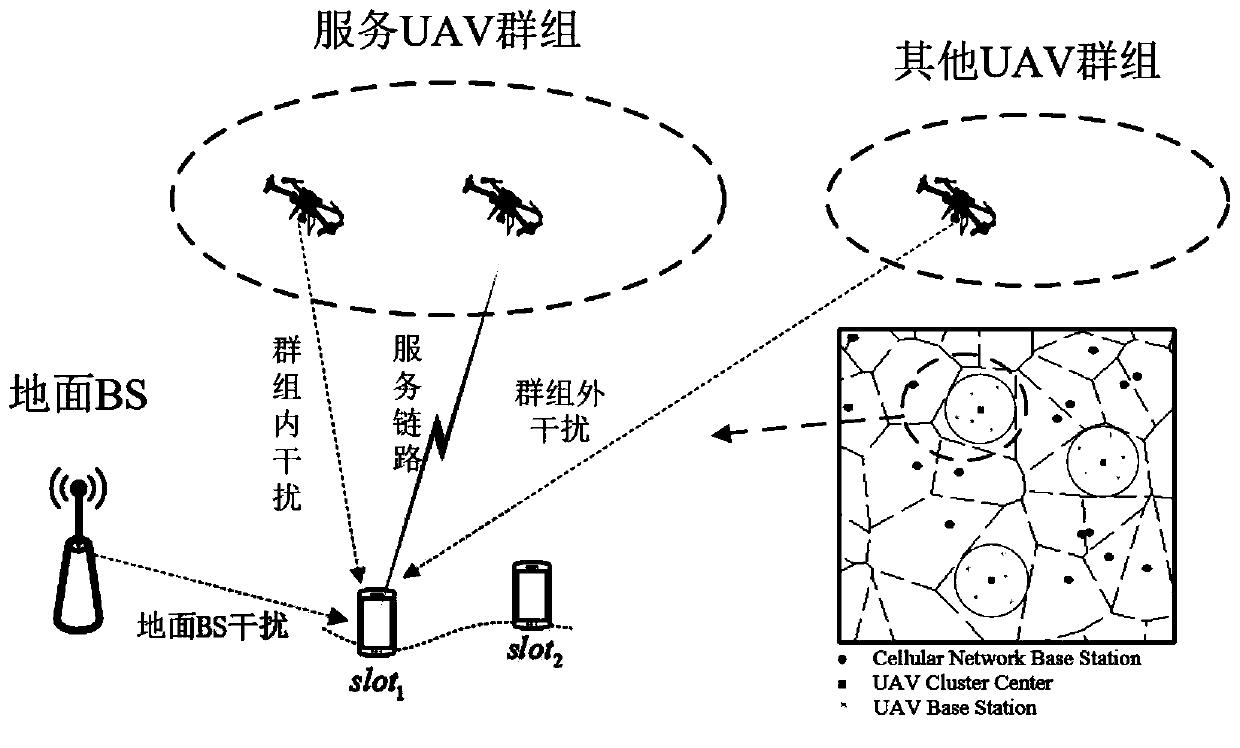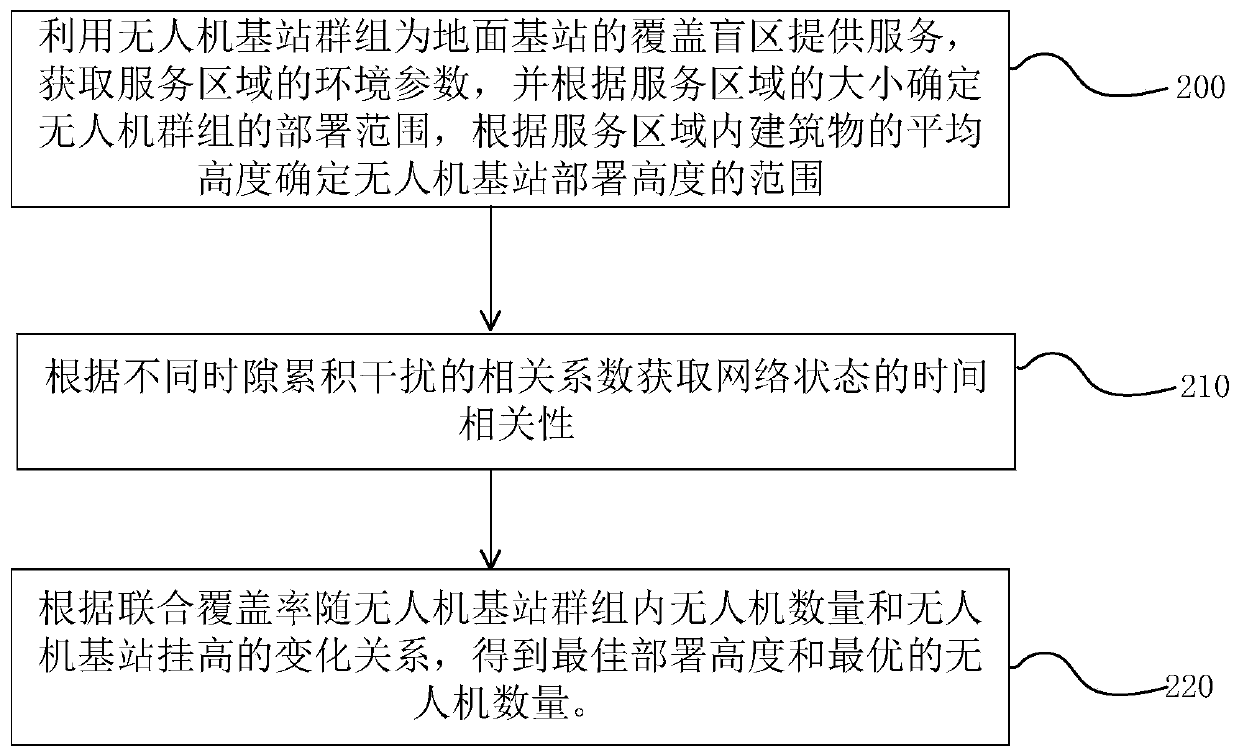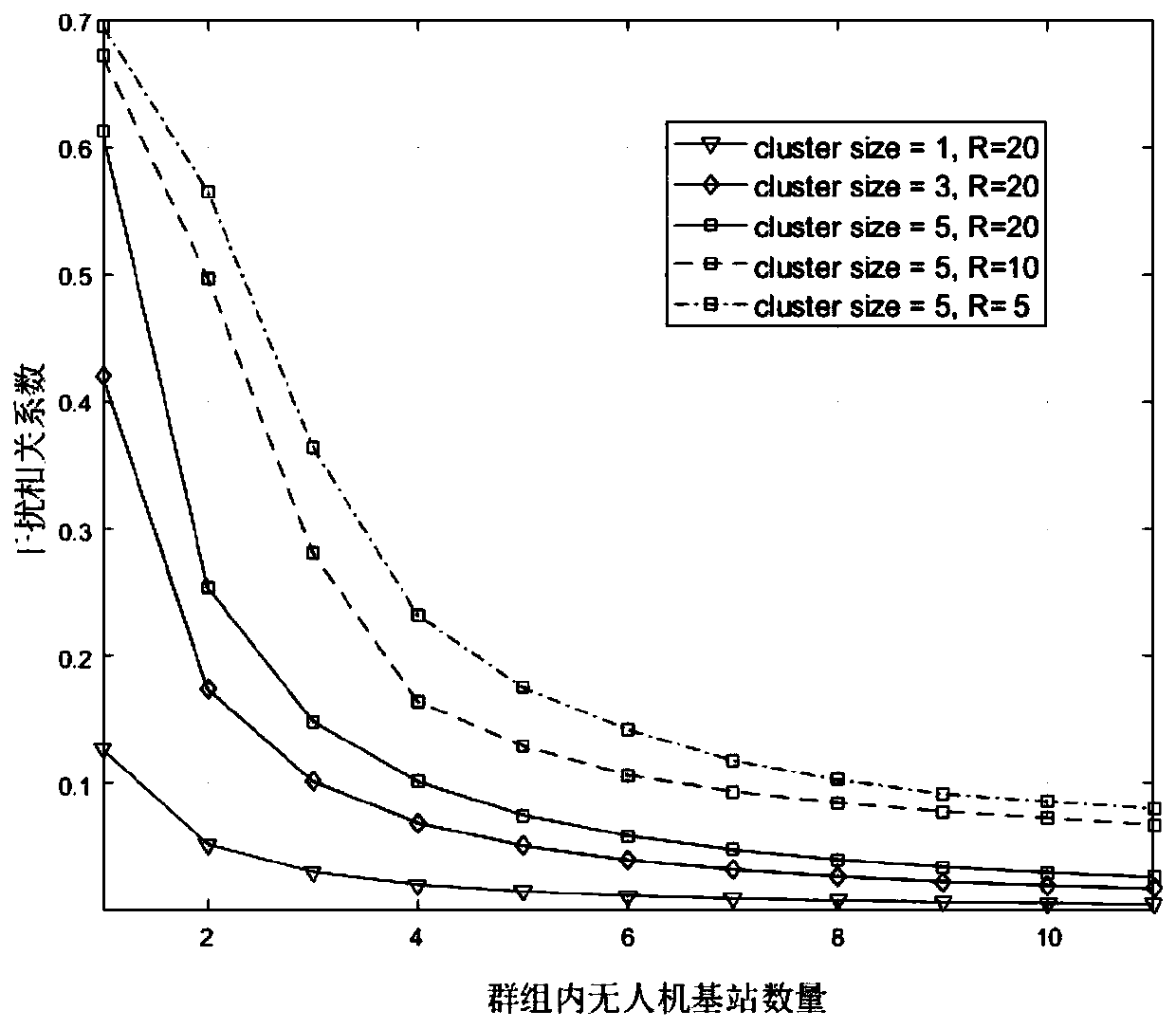Unmanned aerial vehicle base station group deployment method based on time correlation
A time-dependent, machine-based base station technology, applied in wireless communication, radio transmission system, network planning, etc., can solve problems such as time fluctuation, inability to reflect the communication quality of users, and inability to represent the average network rate, etc., to achieve service capability limited effect
- Summary
- Abstract
- Description
- Claims
- Application Information
AI Technical Summary
Problems solved by technology
Method used
Image
Examples
Embodiment Construction
[0044] Aiming at the coverage blind area of the ground base station, the present invention proposes a deployment method for UAV base station groups to fill in the blind area. The network model is shown in the attached figure 1 shown. attached figure 1 The subgraph in the figure shows the network topology when the UAV base station group fills in the blind area: there are multiple ground base station coverage blind areas (ie, target areas), and multiple UAV base station groups will cover these target areas. Provide services to users; deploy UAV base station groups in a circular area according to the location and range of the target area, each group contains multiple UAV base stations; the center of the circular area corresponds to the regional center of the target area , the radius of the circular area is determined by the size of the target area; the deployment height of the drone is related to the average height of the buildings in the target area. Such as figure 1 As sho...
PUM
 Login to View More
Login to View More Abstract
Description
Claims
Application Information
 Login to View More
Login to View More - R&D
- Intellectual Property
- Life Sciences
- Materials
- Tech Scout
- Unparalleled Data Quality
- Higher Quality Content
- 60% Fewer Hallucinations
Browse by: Latest US Patents, China's latest patents, Technical Efficacy Thesaurus, Application Domain, Technology Topic, Popular Technical Reports.
© 2025 PatSnap. All rights reserved.Legal|Privacy policy|Modern Slavery Act Transparency Statement|Sitemap|About US| Contact US: help@patsnap.com



